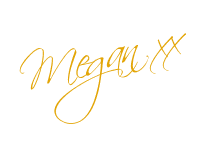 |
| Michael Kors, Kuala Lumpur |
I had traced the patterns, but wasn't going to put in all that handiwork without checking the fit first, so I made a muslin of the skirt and tank top.
 |
| Wins a matching coconut! |
I used very flimsy fabric for the tank, which shows in the bad fit around the arms and shoulders. I stitched the main seams on the machine and topstitched and finished by hand, to get the 'look' of Alabama Chanin.
 |
| Hand-sewn neckline and topstitched front seam. |
For the skirt muslin, I used scraps of khaki plain and striped knit fabric. I made this entirely by hand, including sewing the two fabrics together and attaching the fold-over elastic waistband. After wearing the skirt a few times I noticed that the hand-stitched seams had begun to unravel slightly in places. This wasn't surprising as I'd only used a running stitch, but was a good lesson for making The Real Thing.
I liked both pieces enough to fling them in the suitcase. The skirt was perfect for hanging with the headhunters in Borneo.
Upon spying my skirt, the chief headhunter hurried over to discuss the finer points of creating an Alabama Chanin piece...

and was so impressed, he invited me to attack a tourist of my choice with a poison dart.
But I'm getting ahead of myself. Before we went I also prepared the fabric for The Real Thing.
I opened up the 'Bloomers' stencil design from the Alabama Chanin website on my computer screen and traced it on to some thick paper, study enough so that I could reuse the stencil. I cut it out with my old biology dissecting knife (don't worry, I cleaned it first), then Mr Meggipeg helped me screen print the design on to my top layer of fabric. Although his role was to hold the screen so it wouldn't move, he now claims credit for 99% of the project.
 |
| Basting the two layers together. |
The top layer of fabric is this charcoal grey knit and the bottom layer is purple. I used black fabric paint for the printing, which ended up being almost impossible to see except under cricket pitch floodlights in the sunshine. Unfortunately I only discovered this on the plane when I went cross-eyed trying to see where to stitch. Top tip for sewing on a plane (apart from NOT using a black on black design): use a self-threading needle so the thread can be cut with one's teeth (no scissors allowed) then snapped into the needle avoiding the whole 'pointing a scraggy thread end through the eye of the needle' scenario.
I did enjoy having this to do on holiday. I managed to get one and a bit of the four panels done over the nine days. Since being home, I've set up a bright light in front of the TV and I scorch my pupils there in the evenings getting a bit more stitching done. I am about to start my last panel and I can't wait to see how the skirt is going to turn out.
Of course, I'll show you as soon as it's finished.































